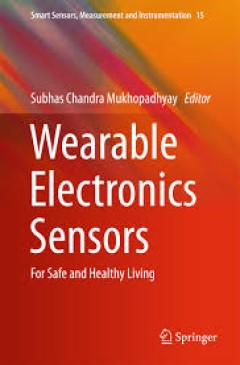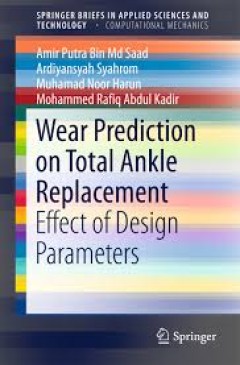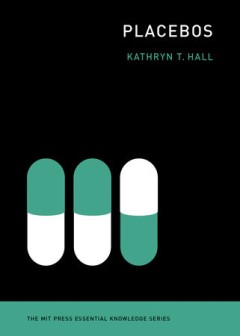Filter by

Hidden in plain sightthe history, science, and engineering of microfluidic te…
Stories behind essential microfluidic devices, from the inkjet printer to DNA sequencing chip.Often hidden from view, microfluidics underlies a variety of devices that are essential to our lives, from inkjet printers to glucometers for the monitoring of diabetes. Microfluidics--which refers to the technology of miniature fluidic devices and the study of fluids at submillimeter levels--is invisi…
- Edition
- -
- ISBN/ISSN
- 9780262369633
- Collation
- 1 online resource
- Series Title
- -
- Call Number
- -

Health design thinking :creating products and services for better health
A practice-based guide to applying the principles of human-centered design to real-world health challenges; updated and expanded with post-COVID-19 innovations. This book offers a practice-based guide to applying the principles of human-centered design to real-world health challenges that range from drug packaging to breast cancer detection. Written by pioneers in the field -- Bon Ku, a physici…
- Edition
- -
- ISBN/ISSN
- 9780262369299
- Collation
- 1 online resource (228 pages).
- Series Title
- -
- Call Number
- -

Biofabrication
"This book will discuss the principles and ethics of biofabrication, a growing field in which biological tissue is fabricated in for medical, research, technological, and even food applications"--OCLC-licensed vendor bibliographic record.
- Edition
- -
- ISBN/ISSN
- 0262366762
- Collation
- 1 online resource.
- Series Title
- -
- Call Number
- -

From X-rays to DNA :how engineering drives biology
"Engineering has been an essential collaborator in biological research and breakthroughs in biology are often enabled by technological advances. Decoding the double helix structure of DNA, for example, only became possible after significant advances in such technologies as X-ray diffraction and gel electrophoresis. Diagnosis and treatment of tuberculosis improved as new technologies -- includin…
- Edition
- -
- ISBN/ISSN
- 9781461952183
- Collation
- 1 online resource (xii, 233 pages) :illustrations
- Series Title
- -
- Call Number
- -

Wearable Electronics Sensors For Safe and Healthy Living
This edited book contains invited papers from renowned experts working in the field of Wearable Electronics Sensors. It includes 14 chapters describing recent advancements in the area of Wearable Sensors, Wireless Sensors and Sensor Networks, Protocols, Topologies, Instrumentation architectures, Measurement techniques, Energy harvesting and scavenging, Signal processing, Design and Prototyping.…
- Edition
- -
- ISBN/ISSN
- 978-3-319-18191-2
- Collation
- -
- Series Title
- -
- Call Number
- -

Wear Prediction on Total Ankle Replacement Effect of Design Parameters
This book develops and analyses computational wear simulations of the total ankle replacement for the stance phase of gait cycle. The emphasis is put on the relevant design parameters. The book presents a model consisting of three components; tibial, bearing and talar representing their physiological functions.
- Edition
- -
- ISBN/ISSN
- 978-3-319-21723-9
- Collation
- -
- Series Title
- -
- Call Number
- -

How Knowledge Grows: The Evolutionary Development of Scientific Practice
An argument that the development of scientific practice and growth of scientific knowledge are governed by Darwin's evolutionary model of descent with modification. Although scientific investigation is influenced by our cognitive and moral failings as well as all of the factors impinging on human life, the historical development of scientific knowledge has trended toward an increasingly accu…
- Edition
- -
- ISBN/ISSN
- 9780262371599
- Collation
- -
- Series Title
- -
- Call Number
- -

Visual Plague: The Emergence of Epidemic Photography
How epidemic photography during a global pandemic of bubonic plague contributed to the development of modern epidemiology and our concept of the “pandemic.” In Visual Plague, Christos Lynteris examines the emergence of epidemic photography during the third plague pandemic (1894–1959), a global pandemic of bubonic plague that led to over twelve million deaths. Unlike medical photography…
- Edition
- -
- ISBN/ISSN
- 9780262370912
- Collation
- -
- Series Title
- -
- Call Number
- -

Imperfection: A Natural History
In praise of imperfection: how life on our planet is a catalog of imperfections, errors, alternatives, and anomalies. In the beginning, there was imperfection, which became the source of all things. Anomalies and asymmetries caused planets to take shape from the bubbling void and sent light into darkness. Life on earth is a catalog of accidents, alternatives, and errors that turned out to wo…
- Edition
- -
- ISBN/ISSN
- 9780262371667
- Collation
- -
- Series Title
- -
- Call Number
- -

Placebos
The biological power of the placebo effect. The power of placebos to ameliorate symptoms has been with us for centuries. Western medicine today is finding it increasingly difficult to ignore the efficacy of placebos. In some clinical trials with placebos as controls, inert or sham replicas of active pharmaceutical drugs and even sham surgeries have been found to be as beneficial as the inter…
- Edition
- -
- ISBN/ISSN
- 9780262371018
- Collation
- -
- Series Title
- -
- Call Number
- -
 Computer Science, Information & General Works
Computer Science, Information & General Works  Philosophy & Psychology
Philosophy & Psychology  Religion
Religion  Social Sciences
Social Sciences  Language
Language  Pure Science
Pure Science  Applied Sciences
Applied Sciences  Art & Recreation
Art & Recreation  Literature
Literature  History & Geography
History & Geography